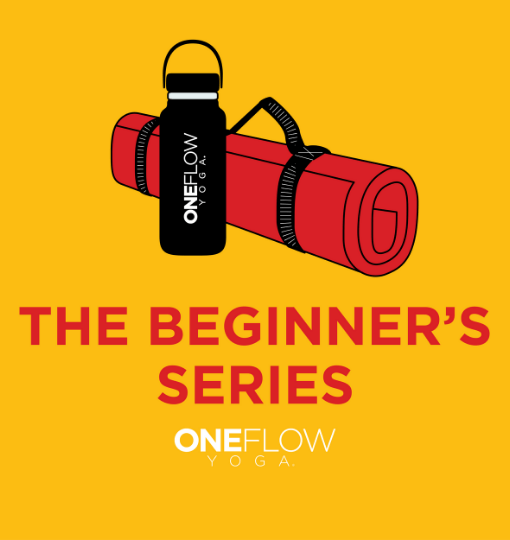Beyond the benefits of yoga is the bigger question of why people practice yoga?
There is value in the practice of yoga itself and three other reasons. First, we practice yoga to understand and gain insight. Second, it takes practice to make a change that sticks. And third, the practice of yoga can help you process your day so you can let go of it and feel grounded.
What we are discussing differs from the benefits of yoga, which are well known and documented. Instead, we’ll explore the value of having a practice and some unique things you can do with it.
Why Practice Yoga
The word practice has several meanings that are important for yoga. Mostly practice is a synonym for train, as in skill-building. It’s repeating actions, often with the goal of improving. When we practice downward-facing dog or sun salutations, we are using this first definition.
This is also what you get if you practice yoga simply as a physical endeavor.
However, another meaning, to put ideas into action, is the deeper secret. In this vein, yoga means putting theory into practice. It’s where the rubber meets the road. This is what people mean when they say there’s more to yoga than asana.

Theory, aka knowledge or wisdom, is known as jnana in Sanskrit, the language of yoga. Vijnana is the application of that knowledge. The “vi” you see there is the same as in vinyasa, the most popular form of yoga. Vi means to individuate and make particular.
For instance, you can watch a bunch of videos on cake decorating to gain knowledge, but now, with this one cake in front of you, you put your learning to the test. The moment you do, you’ll learn something else that what seemed easy on the page or screen, is harder in reality.
Repeated Actions
Abhyasa, from Sanskrit, means repeated practice. It is the idea of consistency. Discipline conveys the same intention, stemming from the Latin, disciplina, meaning teaching, learning, or knowledge. If you are going to learn something, it’s going to take repetition.
Yoga means to engage, participate, and to care. It’s not a one-and-done deal, but something that you’ll need to do again and again. Repeating your efforts day after day is a significant challenge in yoga. People don’t want to do the work, which provides an opportunity if you are willing to.
This pertains to yoga and life in general. To be able to do things, you’re going to have to generate some heat.
Think about writing a book. If that’s a desire of yours, repeatedly write every day. Stephen King, one of the most prolific writers of our time, says, “I like to get ten pages a day, which amounts to 2,000 words.” In three months, he has written enough for a book that is 900 pages long.
The great authors think in terms of repeated actions. They are not focused so much on the goal as on the act of acting.
But the repetition is not all that matters.
Yoga As A Process
This next point can be difficult to get your head around but is potentially life-changing.
It’s challenging to understand if you come from a Western country’s vantage point like the United States. Here, we are heavily focused on productivity and accomplishing things. This is the home of the planner, reminder, and to-do list.
BUT, yoga has what we might call an un-goal. We practice yoga to practice yoga–to engage in the process of yoga.
A comparison might help. Imagine there was a dance party going on eternally that was close to where you live. It goes on 24-7-365. At any given moment, you could drop into the party and shake your groove thing, which you love to do. You go and dance for as long as you want. Some days it’s 15 minutes, others it’s 3 hours.
If you did that, you would have a dance practice. You are not trying to become a better dancer, though that might be a fringe benefit. You are going to experience dancing.

Yoga Is a Practice
Yoga is a practice. When we treat it as such, we are practicing yoga for the experience of yoga. This is why understanding the meaning of yoga makes a difference. If yoga means to engage, connect, and relate, then yoga as a practice is how you experience those things.
We could express the concept this way:
- Engaging with Your Life is a Practice
- Connecting with Your Thoughts and Feelings is a Practice
- Relating to Yourself and Others is a Practice
All of those ideas are baked into the concept of the practice of yoga.
Practice means to bring your attention and presence to what you are doing and how you are doing it. We can call this concept mindfulness or consciousness, but it’s being aware of what’s going on in the moment.
Yoga is often referred to as “entering the conversation.” Like the dance party example above, there is a constant conversation occurring between you and the world. Treating yoga as a practice allows you to tune in and become a participant in the conversation.
This is why the adage, “yoga is a daily practice,” gets confused. It is not saying you have to do chaturanga or any other posture every day. Instead, take the time, daily, to pay attention and go through the process of being human.
If it seems like we’ve wandered off into woo-woo territory, that’s understandable. However, this is how you successfully deal with anxiety and depression. It’s also how you create mental fortitude and have more joy in your life.
Benefits of a Practice
The benefits of repeated practice are it builds resilience, tenacity, and stick-to-it-ness. You become powerful.
Getting to the mat daily requires you to show up whether you feel like it or not. It can be cold and rainy or hot and humid, and still, you go. To do so, you have to contend with meetings, kids, school, and all of the other ordinary and unexpected matters of life that call you.
When you have a practice, you can build heat, or what we call tapas. The heat arises from the repetition. It’s how water can crack rock if you allow it to drip constantly over time.

This repetition of action is a skill you can develop and use. When you can do so, you can apply it to whatever you’d like to do, whether it’s success in your career, relationship, or other.
This reminds me of a quote from Bill Gates, who says, “Most people overestimate what they can do in one year and underestimate what they can do in ten years.”
Overnight Success Takes 10 Years
Ten is a ballpark figure, but there’s the realization that what you want in life will take some time and effort.
For instance, a talent manager in LA frequently gets asked how long it takes to make it as an actor. Her response:
“Probably 7-12 years. If you stick with it. This business is a process.”
Wendy Alane
Or consider Fleetwood Mac, who finally had a number one album on their 10th album, Rumors, 8 years after the band was formed. I can imagine them wondering if this was ever going to work after album 4 or 5?
Want to be a senior partner in a law firm. The statistic is it will take 10-15 years after you graduate from law school.
Behind all of these successes is effort and doing the work.
Do the Work
When we use the phrase “do the work” in yoga, we mean to pay attention to what is going on inside of you and face it. Do the work of feeling and healing so that you can move on.
That’s just a taste of the idea, but know that doing the work takes the same time and care you give to your outward accomplishments.
Because if you don’t take the time, it can destroy you. Whoa, that sounded a little heavy. But seriously, how many bands, law firms, and actors have gone awry because the individuals haven’t done their inner work. A lot of outward situations come from inward negligence.
Below are the 3 benefits of practicing yoga, both as an act of repetition and putting theory into practice.
Practice Yoga to Understand
Yoga begins with curiosity because that is an entry point for us to pay attention. It could just as easily be doubt, worry, or confusion, for it’s anytime we pause and take another look.
When you find yourself in such a state, your best course of action is to stop and figure out what exactly is going on. Because it’s unwise to make adjustments if you are not addressing the root issue.
Doctors routinely do this when they pause to diagnose. They listen, gather data and intelligence to give them insight. This is not unique to the medical profession, but it can seem abstract to apply the skill to yourself.
After all, you don’t have an EKG or MRI lying around your house. But you do have sensations, thoughts, and emotions. Your body is a deeply connected system that can tell you wondrous things if you stop to attend.
Attune to your body’s signals, and it will reveal how rested, anxious or content you are. It will tell you it needs food, touch, or solitude. It will share how your grief has passed or that you are in love.
Pausing to feel will give you a certain amount of understanding, as will taking regular respites for reflection, introspection, and contemplation.
When yoga is at it’s best, it takes up what it means to be human. What do we hope for? What do we fear? What can we do about things? You can ferret out these deeper issues through practice.

Practice Yoga to Change
But insight alone is not enough. In fact, it’s only a beginning. You have to take that knowledge and apply it.
If you want to make a change that ensures, you’re going to need the repetition of a practice. You need a way to make the transformation happen in your everyday life.
Yoga is the way that we change things and hold things together over time.
This is why many diets fail because we focus only on immediate results.
Instead of diet, think of how you eat as making a lifestyle change. It’s something you will do repetitively. This flips the equation from being something you do for 30 days to a pattern you are establishing going forward.
It’s a smarter way to approach weight loss because your body likes to maintain your weight. It’s trying to keep you alive. When you suddenly lose a lot of weight, as when you diet short-term, your body thinks you are not getting enough calories and does everything it can to protect you. This is why you gain the weight back so quickly after coming off the diet.
By going slow and changing what you eat over time, you give your body time to adjust and reset.
We practice little-by-little, again and again.
Or take a relationship example. Relationships can be thought of as living things that need regular care and attention, just like you would give to a plant. If you stop showing up for a relationship and watering it, it withers and dries up like your petunias.
The internal work is often the most difficult to change because it’s hard to see the changes. If you are trying to let go of something, that is an active process. You have to let go not once but over and over.
Slowly, though, it will turn because what we focus on, and repeatedly do, makes us. Or, in the case of change, it re-makes us.
Once the change is made, though, don’t stop practicing. Maintenance is just as critical.
If you stop practicing yoga, you will keep the benefits for a while, like a plane can glide without an engine. Over time, however, you will start to notice things falling apart because the world has continued to move on. New things show up that can intrude on what you’ve done.
Practice Yoga to Process
This is why you need the final reason to practice yoga. Use it as a venue to process and deal with what comes up from daily living.
The Jains are a subset of yoga who thought of your stuff as a sticky substance that clung to you. I think it’s helpful for our understanding to imagine that all of the things we encounter leave a bit of residue on us during the day. We need a way to wash it off, or it can build up like a dank smell in your towels.
The practice of yoga gives us a way to release the day and become unstuck.
The physical practice gives us a way to move and process physically. And the internal practice provides us with a way to process what we feel and think.
Think of understanding, change, and process as a continuum. New things come up, so you take the time to pay attention and notice what’s going on. From what you learn, you might want to make an adjustment or reinforce what you are already doing. And process is the opportunity to ground and connect because you aren’t letting things build up.
Why Your Yoga Practice Will Change
In the form of the ancient songs known as the Vedas, yoga was initially an externally focused practice. Likewise, today many students approach yoga from the external, asana aspect.
The ancients were also very successful in the world.
But something happened, and it’s the same thing that happens for us. Yogins asked, is this all there is? Is there something more?
That question moved yoga to an internal practice, and then ultimately inner and outer.
When you practice yoga, the process changes you. You start to wonder if there’s more than the poses. Or perhaps you begin to see patterns in your thinking or feeling and question what you can do about them. You become curious.
This is a great moment, for there is always more to see and learn. There is a possibility to engage with life, even if you haven’t always. And there is the opportunity of loving the life you have.



